- Home
- H. P. Lovecraft
H.P. Lovecraft Goes to the Movies
H.P. Lovecraft Goes to the Movies Read online
FALL RIVER PRESS and the distinctive FALL RIVER PRESS logo are registered trademarks of Barnes & Noble., Inc.
1 3 5 7 9 10 8 6 4 2
Compilation © 2011 by Fall River Press
Cover Design: Faceout Studio, Charles Brock
Cover Illustration: DANA MACKENZIE
The stories in this volume have been reprinted with the permission of
Robert C. Harrall, Administrator of the Literary Estate of H.P. Lovecraft,
and Lovecraft Properties, LLC
All rights reserved
ISBN 978-1-4351-3617-5
ISBN 978-1-4351-3726-4 (ebook)
For information about custom editions, special sales, premium and
corporate purchases, please contact Sterling Special Sales
Department at 800-805-5489 or [email protected].
www.sterlingpublishing.com
CONTENTS
PREVIEW
H.P. Lovecraft on the Silver Screen
FEATURE PRESENTATION
The Colour Out of Space
Cool Air
Beyond the Wall of Sleep
The Dreams in the Witch House
The Statement of Randolph Carter
The Unnamable
The Dunwich Horror
Herbert West—Reanimator
Pickman’s Model
The Call of Cthulhu
From Beyond
Dagon
The Shadow Over Innsmouth
CREDITS
PREVIEW
H.P. LOVECRAFT ON THE SILVER SCREEN
In a letter that he wrote to Weird Tales editor Farnsworth Wright in 1933, H.P. Lovecraft revealed himself to be no great fan of the horror films of his day:
“The Bat” made me drowse back in the early 1920s—and last year an alleged “Frankenstein” on the screen would have made me drowse had not a posthumous sympathy for poor Mrs. Shelley made me see red instead. “Ugh!” And the screen “Dracula” in 1931—I saw the beginning of that in Miami, Fla.—but couldn’t bear to watch it drag to its full term of dreariness, hence walked out into the fragrant tropic moonlight!
How ironic then, that in the twenty-first century, Lovecraft has become one of the most-adapted horror writers for the silver screen. In the past half-century, more than one hundred treatments of his work have appeared in movie theaters or on television, in a dizzying array of formats and approaches: big budget and low budget; high concept and exploitative; big screen and direct-to-video; live action and animated; feature length and short subject; special-effects extravaganza and silent-film homage. Adaptations of Lovecraft’s stories have attracted some of Hollywood’s best-known directors, screenwriters, and actors. They have also cultivated a loyal and devoted base of fans who attend the H.P. Lovecraft Film Festival, held annually since 1996.
The ubiquity of film adaptations of Lovecraft’s stories is such today that one might well ask why it took forty years from Lovecraft’s first professional sale before Hollywood came knocking at his door (metaphorically speaking, that is; Lovecraft had already been dead a quarter century by the time the first film of his work was produced). The answer has to do with the peculiarities of both Hollywood and Lovecraft’s writing. The first wave of horror films in the 1930s and ’40s were mostly adaptations of classic works that invoked the monsters we now consider horror icons: the vampire, the werewolf, the mummy, the zombie, and Frankenstein’s monster. All of these beings are conspicuously absent from Lovecraft’s unique type of horror fiction. The second wave of horror films in the 1950s spliced in threads of science fiction to create cautionary tales that addressed our nation’s Cold War anxieties and concerns about the dawning nuclear age. By the 1960s, though, a more liberal and eclectic sensibility began percolating through Hollywood, due in part to the inroads made by an increasing number of independent filmmakers. And some people who knew Lovecraft’s fiction from their youthful reading of it in pulp fiction magazines of the 1920s and ’30s were at the height of their careers as writers and directors in the film industry.
Lovecraft’s debut adaptation for the screen happened virtually anonymously in 1963, with the release of The Haunted Palace. Don’t go looking for that title anywhere in Lovecraft’s body of work. It comes from an Edgar Allan Poe poem, and the film was directed by Roger Corman at the height of his Poe adaptation frenzy in the early sixties. A tale of sorcery and supernatural possession, it was based loosely on Lovecraft’s short novel “The Case of Charles Dexter Ward.” The film starred Vincent Price, and in supporting roles Lon Chaney, Jr. and Elisha Cook, Jr., both veterans of horror (as well as other) films. The screenplay was by Charles Beaumont, a gifted writer of fantasy and science fiction and a seasoned screenwriter who scripted some of the best episodes of television’s The Twilight Zone. An uncredited (and then-unknown) Francis Ford Coppola contributed dialogue. It’s hard to guess what Lovecraft would have thought of the movie, though he might not have minded the association with Poe, the writer whom he considered to be the greatest influence on his own work.
You would think a regular flow of Lovecraft films would have followed after this initial ice-breaking, but such was not the case. Over the next twenty years, fewer than a dozen films based on Lovecraft’s stories were released, some of them more ambitious in scope than others. In 1965, Daniel Haller directed Die, Monster, Die! (a.k.a. Monster of Terror), a rendering of Lovecraft’s science fiction terror tale “The Colour Out of Space” that paired master horror actor Boris Karloff with teen heartthrob Nick Adams. The screenplay was written by Jerry Sohl, whose credits included scripts for Alfred Hitchcock Presents, The Twilight Zone, and The Outer Limits. Sohl also scripted Curse of the Crimson Altar (1968), a loose adaptation of Lovecraft’s “The Dreams in the Witch House” that matched Karloff with Christopher Lee, who in the years just previous had become well-known for his portrayals of Count Dracula (among other roles) in a series of films produced by England’s infamous Hammer Studios. Probably the best-known of all Lovecraft adaptations from this era was “The Dunwich Horror” (1970), the first film to take its title directly from one of Lovecraft’s stories. A loose adaptation of Lovecraft’s classic tale, it featured former child actors Dean Stockwell and Sandra Dee in the lead roles.
Although many of Lovecraft’s colleagues and contemporaries saw their stories from the pulp magazines adapted for pioneering television programs such as Boris Karloff’s Thriller (1960–1962), it wasn’t until 1971 that Lovecraft made his own television debut on Rod Serling’s Night Gallery, an hour-long weekly program that had been conceived as something of a follow-up to Serling’s critically acclaimed and influential The Twilight Zone from a decade before. Presented in an anthology format that featured two or three different episodes each program, Night Gallery ran back-to-back adaptations of Lovecraft’s “Pickman’s Model” and “Cool Air” (scripted by Serling himself), respectively, as the lead episodes of its December 1 and December 8 programs. Owing to television’s wider viewership these shows were, at the time, the Lovecraft adaptations that reached the biggest audience.
By 1985, nearly a dozen films or television episodes based on Lovecraft’s fiction were in circulation, a rather modest amount for Lovecraft’s twenty-two year presence in Hollywood. It took a signature event to open the floodgates of contemporary film treatments of his fiction and that proved to be Re-Animator, Stuart Gordon’s provocative adaptation of “Herbert West—Reanimator.” Written to order for a semi-professional magazine of dubious quality, Lovecraft’s tale of a medical student’s experiments to resurrect the dead was self-consciously and self-mockingly gruesome. Gordon retained many of the story’s basics set pieces but amped up the gore and introduced a thread of lurid sexual
ity. The result was a film that played as outrageously on the screen as Lovecraft’s original reads in print. Gordon’s screen treatment received considerable attention and quickly became a cult classic. It helped to establish him, and starring actor Jeffrey Combs, as leading exponents of Lovecraft’s work on film. It also helped to show a new generation of filmmakers that imaginative modern interpretations of Lovecraft’s fiction were possible.
Nearly fifty years have passed since the first film of a Lovecraft story played in movie theatres and in that interval perhaps half of Lovecraft’s macabre tales have been translated into movies—several more than once. These include the short shockers “Cool Air,” “Pickman’s Model,” “From Beyond,” “Dagon,” “The Music of Erich Zann,” “The Statement of Randolph Carter,” “The Unnamable,” and “The Rats in the Walls,” some of which have been filmed as short subjects and some elaborated as feature-length productions. Many of Lovecraft’s longer horror stories have been adapted as well: “The Call of Cthulhu,” “The Dreams in the Witch House,” “The Dunwich Horror,” “The Case of Charles Dexter Ward,” “The Shadow Over Innsmouth,” and “The Whisperer in Darkness.” All have posed unique challenges to filmmakers. The virtual absence of female characters in Lovecraft’s fiction has invited many directors and screenwriters to take creative liberties with the plots of the stories, introducing a love interest and new characters necessary for it. And many of Lovecraft’s tales that work most effectively on the printed page do so because they build to a crescendo of horror within the mind of the narrator through a correlation of associations and insights that don’t always lend themselves to cinematically exciting depictions. The stories of Lovecraft’s often referred to as his tales of the Cthulhu Mythos present their own difficulties. They feature otherworldly entities whose immense size and terrifying non-anthropomorphic biology call out for special make up effects and computer graphic imagery that only movies with significant special effects budgets can credibly create. Even then, the thrust of Lovecraft’s descriptions of these creatures in his stories is to impress upon readers how indescribable and inconceivable they are—a quality that the literalness of the screen image virtually contradicts.
The quality of films spun from Lovecraft’s fiction varies widely, and often it is in the eye of the viewer. Some films with impressive budgets seem to shoot significantly wide of the mark of their source story, while other more modestly financed movies better capture the essence of Lovecraft’s original. Several of the least effective Lovecraft adaptations are those that have stuck slavishly to the plots of a story while some of the more creative have used the basics of the Lovecraft story as a springboard into wildly imaginative realms. Regardless of what moviegoers may think of the treatment of Lovecraft’s work on the silver screen, the merits of his stories are indisputable. This book features some of Lovecraft’s most highly regarded and frequently reprinted tales of horror. Just as many people have enjoyed treatments of Lovecraft’s stories in the movies without ever having read a word of his fiction, so is it possible to read these stories as works that stand apart from the films they have inspired. Both the fiction and the films are tributes to the dark imagination of H.P. Lovecraft, a writer acknowledged as the greatest American writer of weird fiction after Edgar Allan Poe, and an artist who never could have guessed that three quarters of a century after his death his work would still be read, much less adapted for the movies.
—Michael Kelahan
New York, 2011
FEATURE
PRESENTATION
THE COLOUR OUT OF SPACE
Published in the September 1927 issue of the science fiction pulp Amazing Stories, this oft-reprinted tale was the second Lovecraft story to be adapted for the movies, under the title Die, Monster, Die! Released in 1965, it was a memorable vehicle for iconic horror actor Boris Karloff, the first of two Lovecraft adaptations he would star in. In 1987, the story was filmed as The Curse, and has since inspired several other cinematic treatments of Lovecraft’s work.
West of Arkham the hills rise wild, and there are valleys with deep woods that no axe has ever cut. There are dark narrow glens where the trees slope fantastically, and where thin brooklets trickle without ever having caught the glint of sunlight. On the gentler slopes there are farms, ancient and rocky, with squat, moss-coated cottages brooding eternally over old New England secrets in the lee of great ledges; but these are all vacant now, the wide chimneys crumbling and the shingled sides bulging perilously beneath low gambrel roofs.
The old folk have gone away, and foreigners do not like to live there. French-Canadians have tried it, Italians have tried it, and the Poles have come and departed. It is not because of anything that can be seen or heard or handled, but because of something that is imagined. The place is not good for the imagination, and does not bring restful dreams at night. It must be this which keeps the foreigners away, for old Ammi Pierce has never told them of anything he recalls from the strange days. Ammi, whose head has been a little queer for years, is the only one who still remains, or who ever talks of the strange days; and he dares to do this because his house is so near the open fields and the travelled roads around Arkham.
There was once a road over the hills and through the valleys, that ran straight where the blasted heath is now; but people ceased to use it and a new road was laid curving far toward the south. Traces of the old one can still be found amidst the weeds of a returning wilderness, and some of them will doubtless linger even when half the hollows are flooded for the new reservoir. Then the dark woods will be cut down and the blasted heath will slumber far below blue waters whose surface will mirror the sky and ripple in the sun. And the secrets of the strange days will be one with the deep’s secrets; one with the hidden lore of old ocean, and all the mystery of primal earth.
When I went into the hills and vales to survey for the new reservoir they told me the place was evil. They told me this in Arkham, and because that is a very old town full of witch legends I thought the evil must be something which grandams had whispered to children through centuries. The name “blasted heath” seemed to me very odd and theatrical, and I wondered how it had come into the folklore of a Puritan people. Then I saw that dark westward tangle of glens and slopes for myself, and ceased to wonder at anything besides its own elder mystery. It was morning when I saw it, but shadow lurked always there. The trees grew too thickly, and their trunks were too big for any healthy New England wood. There was too much silence in the dim alleys between them, and the floor was too soft with the dank moss and mattings of infinite years of decay.
In the open spaces, mostly along the line of the old road, there were little hillside farms; sometimes with all the buildings standing, sometimes with only one or two, and sometimes with only a lone chimney or fast-filling cellar. Weeds and briers reigned, and furtive wild things rustled in the undergrowth. Upon everything was a haze of restlessness and oppression; a touch of the unreal and the grotesque, as if some vital element of perspective or chiaroscuro were awry. I did not wonder that the foreigners would not stay, for this was no region to sleep in. It was too much like a landscape of Salvator Rosa; too much like some forbidden woodcut in a tale of terror.
But even all this was not so bad as the blasted heath. I knew it the moment I came upon it at the bottom of a spacious valley; for no other name could fit such a thing, or any other thing fit such a name. It was as if the poet had coined the phrase from having seen this one particular region. It must, I thought as I viewed it, be the outcome of a fire; but why had nothing new ever grown over those five acres of grey desolation that sprawled open to the sky like a great spot eaten by acid in the woods and fields? It lay largely to the north of the ancient road line, but encroached a little on the other side. I felt an odd reluctance about approaching, and did so at last only because my business took me through and past it. There was no vegetation of any kind on that broad expanse, but only a fine grey dust or ash which no wind seemed ever to blow about. The trees near it were sickly and st
unted, and many dead trunks stood or lay rotting at the rim. As I walked hurriedly by I saw the tumbled bricks and stones of an old chimney and cellar on my right, and the yawning black maw of an abandoned well whose stagnant vapours played strange tricks with the hues of the sunlight. Even the long, dark woodland climb beyond seemed welcome in contrast, and I marvelled no more at the frightened whispers of Arkham people. There had been no house or ruin near; even in the old days the place must have been lonely and remote. And at twilight, dreading to repass that ominous spot, I walked circuitously back to the town by the curving road on the south. I vaguely wished some clouds would gather, for an odd timidity about the deep skyey voids above had crept into my soul.
In the evening I asked old people in Arkham about the blasted heath, and what was meant by that phrase “strange days” which so many evasively muttered. I could not, however, get any good answers, except that all the mystery was much more recent than I had dreamed. It was not a matter of old legendry at all, but something within the lifetime of those who spoke. It had happened in the ’eighties, and a family had disappeared or was killed. Speakers would not be exact; and because they all told me to pay no attention to old Ammi Pierce’s crazy tales, I sought him out the next morning, having heard that he lived alone in the ancient tottering cottage where the trees first begin to get very thick. It was a fearsomely archaic place, and had begun to exude the faint miasmal odour which clings about houses that have stood too long. Only with persistent knocking could I rouse the aged man, and when he shuffled timidly to the door I could tell he was not glad to see me. He was not so feeble as I had expected; but his eyes drooped in a curious way, and his unkempt clothing and white beard made him seem very worn and dismal. Not knowing just how he could best be launched on his tales, I feigned a matter of business; told him of my surveying, and asked vague questions about the district. He was far brighter and more educated than I had been led to think, and before I knew it had grasped quite as much of the subject as any man I had talked with in Arkham. He was not like other rustics I had known in the sections where reservoirs were to be. From him there were no protests at the miles of old wood and farmland to be blotted out, though perhaps there would have been had not his home lain outside the bounds of the future lake. Relief was all that he shewed; relief at the doom of the dark ancient valleys through which he had roamed all his life. They were better under water now—better under water since the strange days. And with this opening his husky voice sank low, while his body leaned forward and his right forefinger began to point shakily and impressively.

 The Best of H.P. Lovecraft
The Best of H.P. Lovecraft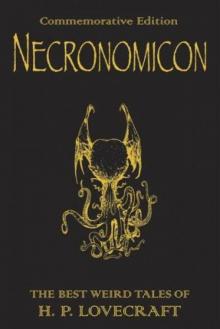 The Definitive H.P. Lovecraft: 67 Tales Of Horror In One Volume
The Definitive H.P. Lovecraft: 67 Tales Of Horror In One Volume The Complete Works of H.P. Lovecraft
The Complete Works of H.P. Lovecraft Other Gods and More Unearthly Tales
Other Gods and More Unearthly Tales Lovecraft's Fiction Volume I, 1905-1925
Lovecraft's Fiction Volume I, 1905-1925 The Shadow Out of Time
The Shadow Out of Time The Shunned House
The Shunned House Lovecraft's Fiction Volume II, 1926-1928
Lovecraft's Fiction Volume II, 1926-1928 The Thing on the Doorstep and Other Weird Stories
The Thing on the Doorstep and Other Weird Stories Dream Cycle of H. P. Lovecraft: Dreams of Terror and Death
Dream Cycle of H. P. Lovecraft: Dreams of Terror and Death Great Tales of Horror
Great Tales of Horror Shadows of Death
Shadows of Death Delphi Complete Works of H. P. Lovecraft (Illustrated)
Delphi Complete Works of H. P. Lovecraft (Illustrated) Waking Up Screaming: Haunting Tales of Terror
Waking Up Screaming: Haunting Tales of Terror H.P. Lovecraft Goes to the Movies
H.P. Lovecraft Goes to the Movies The Road to Madness
The Road to Madness The Complete H.P. Lovecraft Reader (68 Stories)
The Complete H.P. Lovecraft Reader (68 Stories) The Horror in the Museum
The Horror in the Museum Collected Fiction Volume 1 (1905-1925): A Variorum Edition
Collected Fiction Volume 1 (1905-1925): A Variorum Edition Lovecrafts_Fiction, vol.I_1905-1925
Lovecrafts_Fiction, vol.I_1905-1925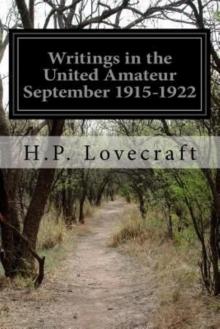 Writings in the United Amateur, 1915-1922
Writings in the United Amateur, 1915-1922 H.P. Lovecraft: The Complete Works
H.P. Lovecraft: The Complete Works Collected Fiction Volume 3 (1931-1936): A Variorum Edition
Collected Fiction Volume 3 (1931-1936): A Variorum Edition H.P. Lovecraft: The Complete Fiction
H.P. Lovecraft: The Complete Fiction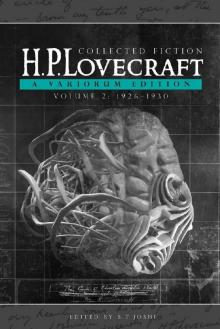 Collected Fiction Volume 2 (1926-1930): A Variorum Edition
Collected Fiction Volume 2 (1926-1930): A Variorum Edition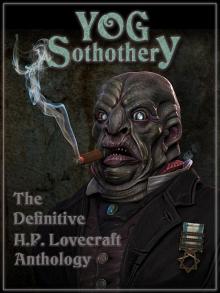 Yog Sothothery - The Definitive H.P. Lovecraft Anthology
Yog Sothothery - The Definitive H.P. Lovecraft Anthology The Complete H.P. Lovecraft Collection (Xist Classics)
The Complete H.P. Lovecraft Collection (Xist Classics)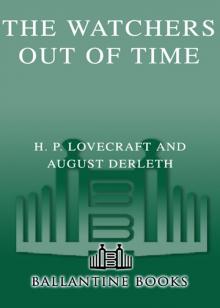 The Watchers Out of Time
The Watchers Out of Time Eldritch Tales
Eldritch Tales The Other Gods And More Unearthly Tales
The Other Gods And More Unearthly Tales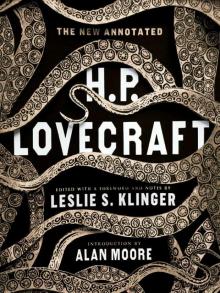 The New Annotated H. P. Lovecraft
The New Annotated H. P. Lovecraft At the mountains of madness
At the mountains of madness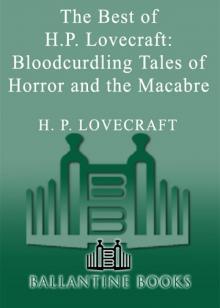 Bloodcurdling Tales of Horror and the Macabre
Bloodcurdling Tales of Horror and the Macabre Fossil Lake II: The Refossiling
Fossil Lake II: The Refossiling Shadows of Carcosa: Tales of Cosmic Horror by Lovecraft, Chambers, Machen, Poe, and Other Masters of the Weird
Shadows of Carcosa: Tales of Cosmic Horror by Lovecraft, Chambers, Machen, Poe, and Other Masters of the Weird H. P. Lovecraft
H. P. Lovecraft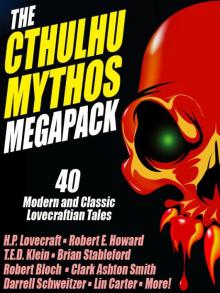 The Cthulhu Mythos Megapack
The Cthulhu Mythos Megapack The Complete H. P. Lovecraft Reader (2nd Edition)
The Complete H. P. Lovecraft Reader (2nd Edition) The Complete Fiction
The Complete Fiction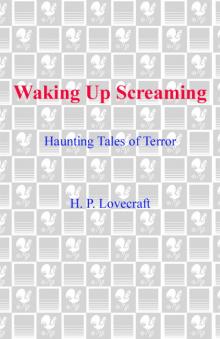 Waking Up Screaming
Waking Up Screaming Transition of H. P. Lovecraft
Transition of H. P. Lovecraft![[1935] The Shadow Out of Time Read online](http://i1.bookreadfree.com/i2/04/12/1935_the_shadow_out_of_time_preview.jpg) [1935] The Shadow Out of Time
[1935] The Shadow Out of Time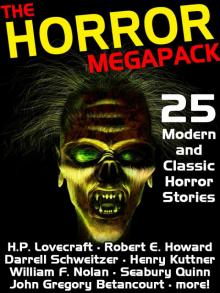 The Horror Megapack
The Horror Megapack